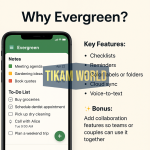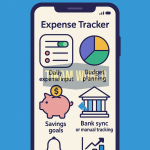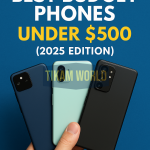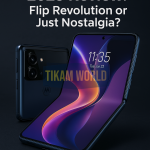🏋️ Top Fitness Gadgets to Track Your Health in 2025
Transform your wellness routine with smart tech
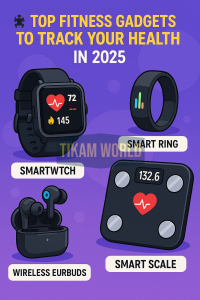
Staying fit and healthy is more than just hitting the gym—it’s about consistent tracking, real-time feedback, and actionable insights. Thanks to the explosion of wearable tech and smart gadgets, monitoring your health and fitness has never been easier.
In this comprehensive guide, we explore the top fitness gadgets that help you track everything from heart rate to sleep quality. Each device is carefully selected for accuracy, ease of use, and affordability—no gym membership required!
📐 Why Smart Fitness Gadgets Matter
Before jumping into products, let’s understand why integrating technology into your wellness routine makes such a difference:
- Real-Time Data: Instant feedback on performance and health metrics
- Personalized Coaching: AI-powered insights adapt to you
- Accountability & Motivation: Track progress, set goals, share with friends
- Health Monitoring: Early detection of stress, irregular heart rate, poor sleep
🏆 Top Fitness Gadgets for Health Tracking
1. Fitness Smartwatches
⌚ Apple Watch Series 9 (or SE alternative)
- Features: Heart rate monitoring, ECG, blood oxygen (SpO₂), workout detection, fall alerts
- Why It’s Great: Granular tracking of dozens of sports—running, cycling, HIIT, yoga—and deep integration with iPhone and health apps
- 🔗 Backlink: Apple Watch health features – Apple Support
⌚ Fitbit Charge 6
- Features: Continuous heart rate, SpO₂, Active Zone Minutes, Stress Management Score, built-in GPS
- Why Buy: Slim profile, 7-day battery life, strong community for fitness challenges
- 🔗 Backlink: Fitbit Charge line overview – Fitbit Blog
2. Smart Rings
💍 Oura Ring Gen3
- Features: Sleep staging, HRV, body temperature, activity tracking
- Perks: Non-invasive and stylish, 7–10 days battery, advanced sleep readiness insights
- 🔗 Backlink: Oura Ring science – Oura Health
3. Chest-Strap Heart Rate Monitors
❤️ Polar H10
- Features: Medical-grade ECG sensor, ANT+ & Bluetooth, pair with gym equipment or phone
- Why Pro Users Choose It: Exceptional accuracy—perfect for serious athletes and interval training
- 🔗 Backlink: Polar H10 specs detail – Polar Official
4. Wearable Blood Pressure Monitors
🩺 Omron HeartGuide
- Features: FDA-cleared oscillometric blood pressure, activity and sleep tracking
- Standout Feature: It’s a full smartwatch with BP cuff inside the strap, worn all day
- 🔗 Backlink: Omron HeartGuide review – American Heart Association blog
5. Wireless Earbuds with Fitness Tracking
🎧 Samsung Galaxy Buds2 Pro
- Features: Heartrate detection via bone conduction, ambient sound mode, low latency
- Why It’s Essential: Combines immersive audio with health monitoring
- 🔗 Backlink: Galaxy Buds2 Pro fitness use – Samsung Blog
6. Smart Scales
⚖️ Withings Body+
- Features: Weight, body fat, water %, muscle & bone mass, Wi-Fi sync to Health Mate app
- Why It Works: Track long-term body composition trends, not just weight
- 🔗 Backlink: How Body+ works – Withings Support
7. Posture & Movement Trackers
🤸♂️ Upright Go 3
- Features: Real-time posture correction, GPS sensitivity, posture history via app
- Ideal For: Desk workers and those recovering from back injuries
- 🔗 Backlink: Upright posture tracker studies
8. Smart Jump Ropes & Skipping Devices
🔄 Crossrope Get Lean Set
- Features: Smart ropes with interchangeable weighted handles, Bluetooth tracking, workout app
- Why It Stands Out: Tracks speed, calories, rope rotations—great for cardio and strength
- 🔗 Backlink: Crossrope fitness benefits
9. Smart Hydration Bottles
💧 HidrateSpark Stealth
- Features: LED reminders, syncs to Apple Health/Google Fit, tracks daily water intake
- Why It’s Useful: Helps maintain optimal hydration, essential for overall health
- 🔗 Backlink: HidrateSpark study hydration
10. Portable Fitness Devices
📦 Theragun Mini
- Features: Handheld massage device, 3 speed settings, relief for sore muscles
- Why Get It: Compact recovery tool you can carry in a gym bag for pre/post workouts
- 🔗 Backlink: Theragun benefits – Theragun Science
🚀 How to Choose the Right Fitness Gadget
- Define Your Goals: Are you focusing on cardio, strength, sleep, or recovery?
- Accuracy Matters: For medical metrics (BP, ECG), choose FDA-cleared devices.
- Ecosystem Compatibility: Ensure it syncs with Apple Health, Google Fit, Strava, etc.
- Battery Life: Consider charges required for all-day wearables versus 7+ days.
- Comfort & Design: Intend to wear it daily? Prioritize lightweight and ergonomic design.
- Price vs Features: Smart rings are more expensive but offer discrete metrics; smartwatches have versatility.
🔎 Deep Dive: Tracking Key Health Metrics
🫀 Heart Rate and HRV
- Watch or strap method? Chest-straps like Polar H10 offer pro-level accuracy, while smartwatches and rings provide convenient wrist-based monitoring.
💤 Sleep Quality
- Smart rings and watches track stages—REM, deep, light sleep—and offer readiness scores to guide rest.
🏃 Activity & Calorie Burn
- You’ll get reliable step counts, floors climbed, and active minutes across devices. For calorie burn, HR-based trackers yield superior estimates.
🧠 Stress Detection
- Wearables use HR variability and skin conductance to detect stress and prompt breathing exercises.
🤿 Recovery & Muscle Health
- Massage devices like Theragun aid in muscle care. Smart scales offer body composition for recovery monitoring.
💧 Hydration
- Smart bottles remind you to drink water and sync hydration data with fitness ecosystems.
💡 Benefits of Multi-Device Setups
- Cross-Validation: Compare metrics across gadgets for better insight.
- Holistic Health View: Sleep tracked by ring, activity by watch, recovery with Theragun.
- Tiered Budgeting: Start with one device, then upgrade components as needs evolve.
❓ FAQs – Fitness Gadgets for Health Tracking
Q1. Do fitness trackers accurately measure calories burned?
They estimate based on HR and activity. Chest straps and rings improve accuracy compared to wrist-only devices.
Q2. How often should I charge smart rings and watches?
Typically, watches recharge every 1–2 days (Fitbit ~7 days); smart rings last 7–10 days per charge.
Q3. Can wearable BP monitors replace medical devices?
FDA-cleared gadgets like Omron HeartGuide are reliable for daily tracking, but consult your doctor before self-managing hypertension.
Q4. Will these gadgets work without a smartphone?
Most need initial setup via app. Some smartwatches can store workouts offline; smart scales sync via Wi-Fi.
Q5. Are these gadgets worth the investment?
If you value insights that motivate improvement—yes. They pay off through performance optimization and health awareness.
🌟 Final Thoughts
The intersection of fitness and tech has revolutionized how we track, understand, and enhance our well-being. From smart rings that silently monitor sleep cycles to smart scales that decode body composition, today’s gadgets turn data into actionable habits.
Start with one device that aligns with your primary goal—whether tracking heart rate, sleep, or hydration. As your awareness grows, add tools that complement your lifestyle: a massage device for recovery, a scale for body stats, or a posture tracker for back health.
The future of fitness is connected, personalized, and informed—and whether you’re a beginner or athlete, smart tech empowers you to elevate your well-being one metric at a time.
🔗 Continue Exploring
- Read more about sleep-tracking insights in this deep dive: How Sleep Impacts Recovery – Sleep Foundation
- Compare best smartwatches versus rings here: Wearables Showdown – TechCrunch
- Learn how to integrate gadgets with health apps: Health App Integration Guide – Android Authority


